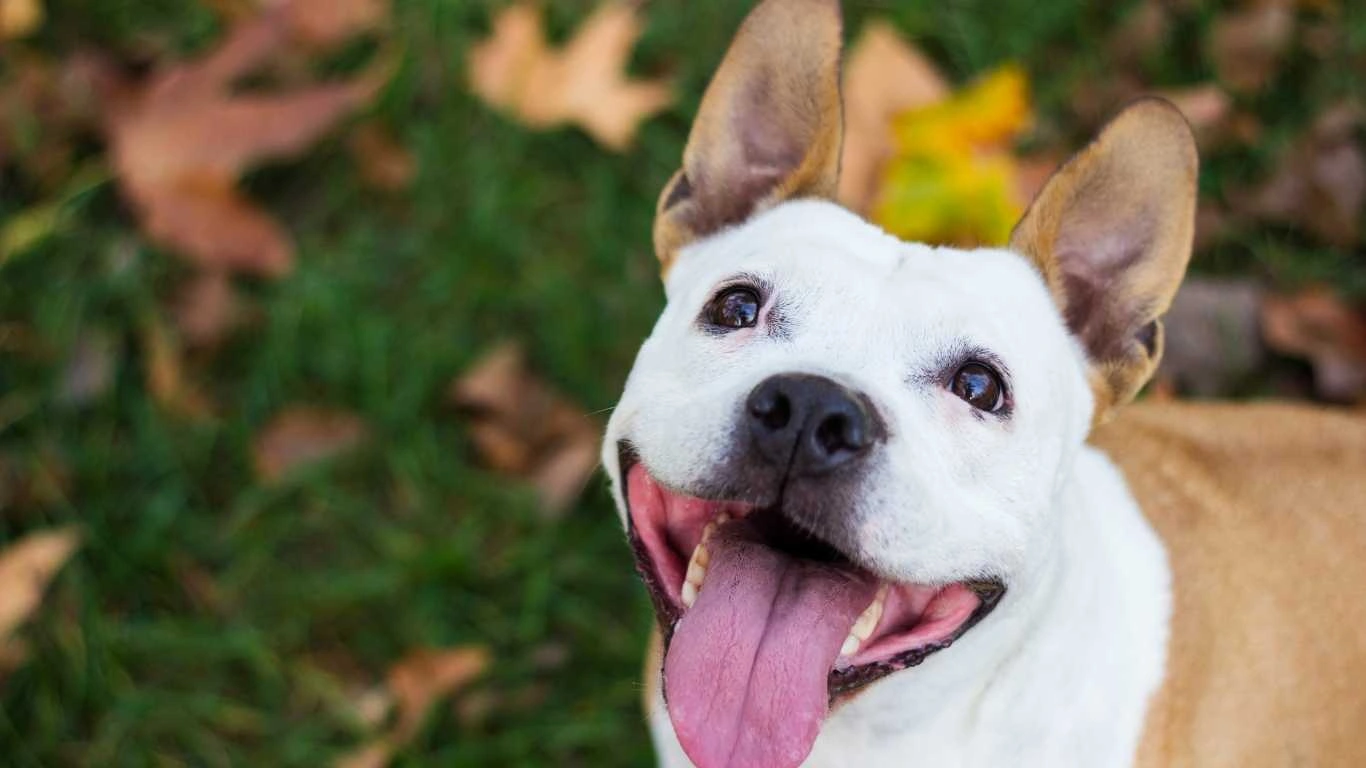Can Dogs Eat Fresh Pumpkin Seeds Safely? Benefits & Risks
If you’re anything like me, you’ve probably found yourself mid-snack, tossing a couple of pumpkin seeds into your mouth, only to have your pup give you those big, pleading eyes. And the question hits you—can dogs eat fresh pumpkin seeds? I’ve worked with dogs in shelters and clinics for years, and this is one of those quirky questions that comes up more often than you’d think. I totally get it—pet parents want to share healthy treats with their dogs, but safety is always priority number one.
So, Can Dogs Eat Fresh Pumpkin Seeds?

Short answer? Yes, they *can*—but there are a few things to know first. As someone who’s cleaned out enough dog kennels to last a lifetime and spent countless hours chatting with vets and pet parents alike, I’ve seen firsthand how dogs react to all kinds of foods, including pumpkin seeds. Done right, these little seeds can offer a bunch of benefits. But fed the wrong way? That’s when you run into tummy troubles or worse.
Let’s break it down together so you can feel confident giving your pup the good stuff without second guessing.
Why Pumpkin Seeds Might Be a Good Treat for Dogs

Natural Nutritional Punch
Pumpkin seeds are small but mighty. They’re loaded with nutrients like zinc, iron, and magnesium. Plus, they’ve got a good amount of healthy fats and antioxidants. These aren’t just fancy buzzwords; they actually support a dog’s skin, coat, and immune system. I once had a senior Labrador in the shelter—sweet old girl named Maggie—who struggled with flaky skin. Her diet got a boost with omega-rich foods (yep, including ground pumpkin seeds), and the difference was like night and day.
Natural Deworming Properties
Now, this might sound a bit out there, but it’s true. Pumpkin seeds contain a compound called cucurbitacin, which can help fight off intestinal parasites. It’s not a substitute for your regular dewormer, of course, but some holistic vets recommend using ground pumpkin seeds as a gentle backup. We had a beagle pup come into the clinic loaded with worms, and alongside treatment, his foster mom added ground pumpkin seeds to his meals. His recovery was solid and his appetite never dipped.
High in Fiber = Better Digestion
Ever had a pup with a runny backend or a little constipation? Happens all the time in shelter life, especially with diet changes. A sprinkle of pumpkin seed (or even canned pumpkin) can help regulate digestion. It’s one of those tricks I keep in my back pocket when new dogs come into the facility and their stomachs are still adjusting.
Preparing Pumpkin Seeds the Right Way

Okay, here’s where it gets important. Dogs can eat pumpkin seeds, yes, but only if they’re prepared properly. No salt, no sugar, no spices, and definitely no artificial coatings. You’d be amazed at how many store-bought seeds come with things like garlic or onion powder—which, if you’ve ever dealt with a dog in garlic-toxicity distress, you know is a big no-no.
- Start with raw, unsalted seeds. Remove them straight from the pumpkin and rinse off the pulp.
- Dry roast in the oven. Bake them at low heat (around 250°F) for 10-15 minutes. No oil needed.
- Grind or crush if needed. Smaller dogs or picky eaters do better when the seeds are ground up and mixed with food.
Personally, I like to prep a batch when I’m roasting pumpkin for myself. Just set aside some for the pup, roast ‘em plain, and store in an airtight container. Keeps things simple and safe.
How Much Is Too Much?
Moderation is key. I usually recommend starting with just a few seeds for small dogs and maybe a teaspoon or two of ground seed for larger breeds. Watch for signs like upset stomach or changes in stool—every dog’s different. One thing I’ve learned after years in the field: always introduce new treats slowly. Even natural stuff can throw off a dog’s gut if they’re not used to it.
In the next part, we’ll dive deeper into specific risks, how pumpkin seeds compare to other popular dog treats, and ways to incorporate them into meals. Trust me, there’s a fun homemade treat recipe coming your way too.
Potential Risks of Feeding Pumpkin Seeds to Dogs

Alright, so we’ve talked about the good stuff—but let’s be real, not every treat is a perfect fit for every dog. Can dogs eat fresh pumpkin seeds? Yes, but just like with people, there’s no one-size-fits-all when it comes to nutrition. Over the years, I’ve had a few dogs react differently to the same food, and it always comes down to their unique makeup—age, breed, allergies, or even gut health.
Choking Hazards for Small Breeds
One time, I saw a little Yorkie named Tito nearly choke on a whole seed. I mean, he was enthusiastic and all, but it reminded me just how important it is to consider size when offering any snack. For smaller pups, grinding the seeds or mixing them into food is definitely safer.
Too Much Fat Can Upset Tummies
Even though pumpkin seeds are packed with healthy fats, too many can cause some dogs to have an upset stomach, greasy stools, or even trigger pancreatitis in sensitive breeds. I remember a sweet Cocker Spaniel, Bella, who had a flare-up after a well-meaning volunteer gave her a bunch of roasted seeds. Ever since then, I always caution pet parents: moderation is key, no matter how healthy the treat seems.
Watch for Salt or Seasoning
This one’s a biggie. Dogs should never eat salted or flavored seeds. In fact, many of the commercial snack packs you find at the store are loaded with sodium and spices that can be toxic to dogs. Garlic and onion powders are especially dangerous. If you’re not preparing them yourself at home, it’s really hard to control what goes into the mix.
How Pumpkin Seeds Compare to Other Dog-Safe Treats

Over the years, I’ve experimented with all kinds of natural treats in both the clinic and the shelter. When dogs come in stressed or recovering from illness, food is often one of the first things we use to build trust. So here’s a quick rundown on how pumpkin seeds stack up:
- Pumpkin Seeds vs. Peanut Butter: Both are rich in fats and great in moderation, but pumpkin seeds don’t carry the risk of xylitol contamination (a deadly sugar substitute sometimes found in PB).
- Pumpkin Seeds vs. Carrot Sticks: Carrots are lower in calories and a great crunch, but they don’t offer the same range of minerals. A mix of both works wonders.
- Pumpkin Seeds vs. Commercial Biscuits: Store-bought biscuits can be high in fillers, artificial stuff, and preservatives. Homemade or natural wins every time in my book.
I used to keep a “treat test chart” on the wall at the shelter—nothing fancy, just a whiteboard where we’d tally how many dogs liked or reacted well to each type. Pumpkin seeds, when prepared right, consistently scored in the top tier for both taste and digestion.
Fun and Easy Ways to Use Pumpkin Seeds in Your Dog’s Diet

Sprinkle Over Meals
This is my go-to. A small spoonful of crushed pumpkin seeds sprinkled on top of kibble adds both crunch and nutrition. Dogs usually go nuts for the change in texture. Plus, it’s easy—you don’t need to bake or prep anything fancy.
Mix with Canned Pumpkin
This combo is a digestive powerhouse. When dogs come into the clinic with constipation or diarrhea, this duo can be a game-changer. Just make sure you’re using plain canned pumpkin—not the pie mix stuff with added sugar and spices.
DIY Frozen Dog Treats
Here’s a little recipe I used to make for the rescue pups during hot summers:
- Mix 1/2 cup plain Greek yogurt, 1/4 cup canned pumpkin, and 1 tbsp ground pumpkin seeds.
- Spoon into silicone molds or ice cube trays.
- Freeze for a few hours and serve as a cool, tummy-friendly treat!
We called them “Pupkin Pops” at the shelter. Even the shy dogs would come running when they heard the freezer open.
Roll into No-Bake Treat Balls
Blend oats, mashed banana, a bit of peanut butter (make sure it’s xylitol-free), and ground pumpkin seeds into small doughy balls. Refrigerate and you’ve got grab-and-go rewards ready for training sessions or walks.
All in all, pumpkin seeds can be more than just a seasonal snack. With a little prep and smart serving, they’re a great way to give your pup a nutrient boost and some tail-wagging flavor. In the next section, I’ll break down some FAQs I’ve gotten from other pet parents, and touch on the vet perspective a bit more too—it’s always good to have both the clinical and real-life views side by side.
Common Questions About Dogs and Pumpkin Seeds

Can Dogs Eat Pumpkin Seeds Raw?
Great question—and one I get a lot! While dogs can technically eat raw pumpkin seeds, I personally don’t recommend it. From my experience in animal care, raw seeds can be tougher to digest and might pose a choking risk, especially for smaller dogs. Roasting the seeds gently (without any salt or seasoning) makes them easier on your pup’s tummy and enhances digestibility. It’s a simple step that really pays off.
Are Pumpkin Seeds Safe for Puppies?
When I’ve worked with puppies in shelters, I always advise caution with anything new, including pumpkin seeds. Their digestive systems are still developing, and introducing too many seeds at once can cause upset. If you want to share some pumpkin seed goodness with your puppy, start with very small amounts and grind the seeds finely. And, as always, check with your vet before adding anything new to your pup’s diet.
How Often Can I Give Pumpkin Seeds to My Dog?
Moderation is definitely key. I usually tell pet parents to treat pumpkin seeds like any other snack—think a few times a week at most. It’s a great way to mix things up from the usual treats, but they shouldn’t replace a balanced diet. Too many seeds, especially in bigger quantities, could lead to stomach upset or excess calories.
What the Vets Say About Dogs Eating Pumpkin Seeds

Working closely with veterinarians over the years, I’ve learned how important it is to back up our feeding choices with expert advice. Most vets agree pumpkin seeds can be a safe, nutritious treat when given correctly. The key points vets stress include:
- Always feed seeds plain—no salt, spices, or oils.
- Grind or crush seeds for smaller dogs or picky eaters.
- Watch for any allergic reactions or digestive upset.
- Use pumpkin seeds as a supplement, not a substitute, for veterinary care and medication.
One of the vets I worked with once said, “Pumpkin seeds are like nature’s little helpers for dogs—full of good stuff but need to be handled with care.” I couldn’t have put it better myself.
Final Tips from My Experience as an Animal Care Specialist
Over the years, I’ve come to see that pet nutrition is part science, part art, and a whole lot of love. Every dog is unique, and what works wonders for one might not be ideal for another. When it comes to pumpkin seeds, my best advice is to:
- Start slow: Introduce seeds gradually and observe your dog’s reaction.
- Keep it natural: Skip the seasoning and extra fats.
- Mix it up: Combine seeds with other healthy foods like pumpkin puree or yogurt.
- Consult your vet: Especially if your dog has pre-existing health conditions.
- Have fun: Treat time should be a bonding moment, not a source of stress.
In the shelter, we often saw how small changes in diet could brighten a dog’s mood and improve their health. It’s amazing how a simple thing like a pumpkin seed can make a difference.
References
- American Veterinary Medical Association
- American College of Veterinary Preventive Medicine
- American Kennel Club
Disclaimer
This article is for informational purposes only and is based on my experience as an Animal Care Specialist and research from trusted veterinary sources. It should not replace professional veterinary advice. Always consult your veterinarian before introducing new foods or supplements to your dog’s diet, especially if your pet has underlying health issues or is on medication.





